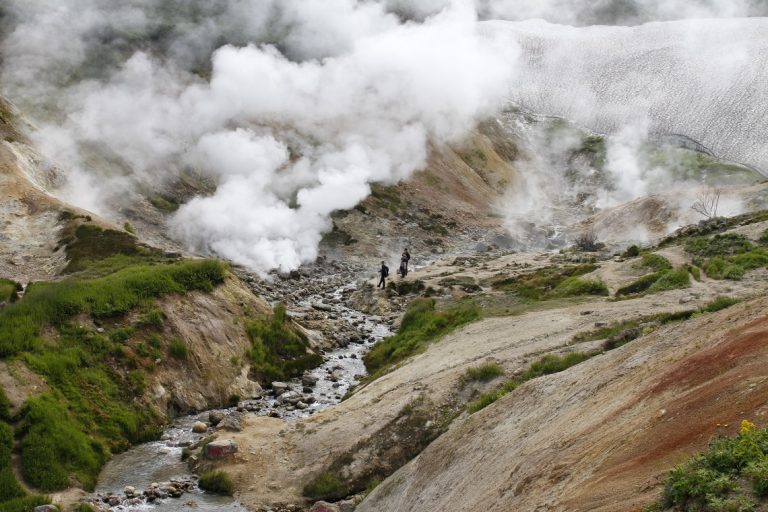A TALE OF FIRE AND FUR
Beyond the far reaches of SIBERIA lies the little-known land of KAMCHATKA. This 780-mile stretch of post-Soviet Russia boasts the highest density of BROWN BEARS and the greatest concentration of VOLCANOES anywhere in the world
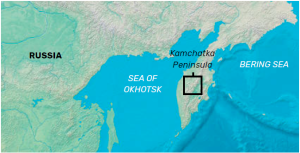 Where is that?’ was the usual response when I told friends we were going to Kamchatka. “The far end of Russia,” I would reply, somewhat inaccurately, “beyond Siberia.” The 780-mile Kamchatka peninsula angles down towards Japan from Chukotka, the easternmost tip of Russia.
Where is that?’ was the usual response when I told friends we were going to Kamchatka. “The far end of Russia,” I would reply, somewhat inaccurately, “beyond Siberia.” The 780-mile Kamchatka peninsula angles down towards Japan from Chukotka, the easternmost tip of Russia.
Why go there? The answer is simple — volcanoes and bears. There are easier places to see both, but Kamchatka boasts the highest density of brown bears and the greatest concentration of volcanoes anywhere in the world, including the highest active volcano in Eurasia, the 4750m Klyuchevskaya. Add to that the appeal of a region that cannot be reached by road and was off-limits to foreigners until 1991.
ROADS IN
There aren’t many roads within the region either. We soon realised it would be almost impossible to travel independently. Quite apart from dealing with the Russian bureaucracy for permits, anywhere interesting is beyond the capabilities of any normal off-road vehicle. The tourist ‘buses’ are big-wheeled 6WD Kamaz trucks with a passenger cabin on the back. After a lot of research, we booked three tours with local operator Red Rivers and arranged our own accommodation in between.
Our trip did not start well; in fact, it looked like we wouldn’t get to Kamchatka at all when our flight to Moscow was cancelled the day before departure. Luckily, an alternative route was found at the last minute which arrived in time for the onward flight to Petropavlovsk. We’d given ourselves a couple of days to recover from jet lag, just long enough for me to develop a bad cold in time for our first tour to Mutnovsky and Gorely volcanoes. Several hours into the journey, realisation dawned that, despite assurances beforehand, the guides did not speak English. That was the low point when the whole trip felt like a big mistake.
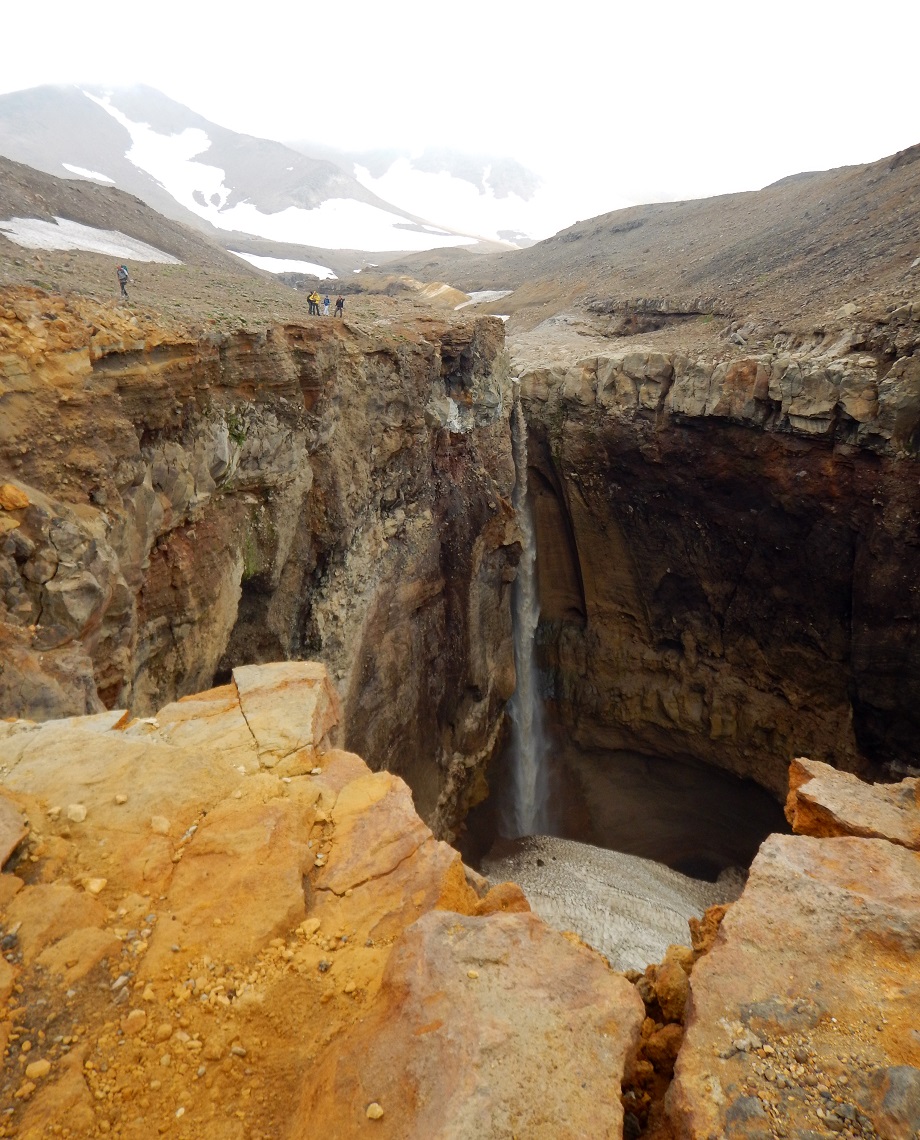
Aleko and I met while sailing in Patagonia but this was the first adventure we had planned together and neither of us had done anything quite like it. Our fellow travellers were all Russian or Russian-speaking Poles. We were saved by Lena, one of the Russians, when she saw we were struggling.
She not only spoke excellent English but had a remarkable talent for simultaneous translation. She and husband Sasha had been to Kamchatka before and knew the guide — in fact, they had made it a condition of booking that Viktor would be their guide again. Lena not only passed on the practical information we needed to know but translated enough of the general conversation over dinner for us to feel included along with Viktor’s stories from many years of guiding.
As the bus began to labour its way uphill and the morning fog dispersed, I was captivated by the unfolding landscape. Birch forest gave way to scrub, then carpets of alpine flowers in pink, blue, and purple. I was impatient to get out and explore. Our tour programme included Dachnye thermal springs. The pools are no longer good for bathing, but we took a short walk to the fumarole field, where the ground was hissing and bubbling beneath our feet and the yellow mud smelled strongly of sulphur. Stronger vents were issuing plumes of steam, warming the cold water of a mountain stream.
BEAR NECESSITIES
After a couple more hours driving, the last part completely off-road, we reached our camp at the base of Gorely volcano. When Aleko and I tried to pitch our tent a little way from the others we were told to move closer together — because of bears. It was hard to imagine a bear in this barren mountain landscape, but later, filling our water bottles from the stream below the tents, we found unmistakable footprints. We were yet to learn that bears are ubiquitous in Kamchatka, they don’t just show on the bear-watching tour. We didn’t always see them, but we found tracks everywhere we went, from the beaches to high on the volcanic plateaux.
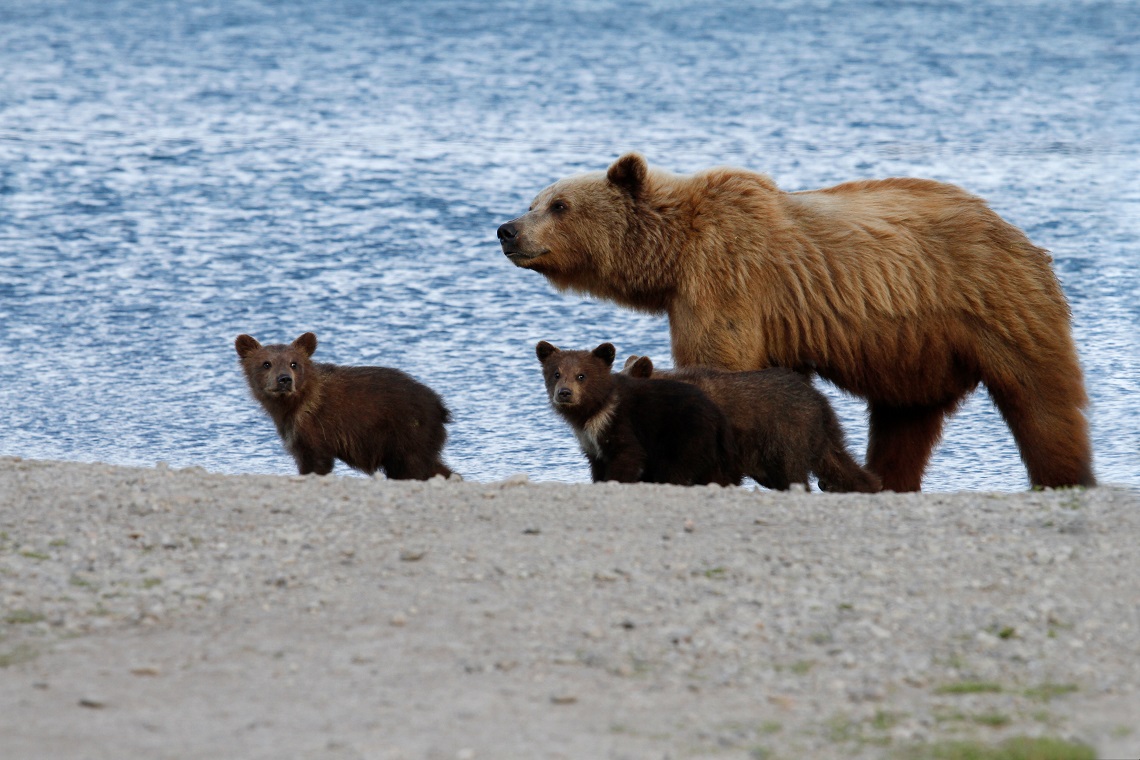
In the evening, I became aware of a constant low, background noise; something between waves crashing on the shore and the roar of a jet engine taking off. It continued through the night, with a slightly menacing feel in the dark. It took us a while to realise it was coming from the valley around Dachnye, or rather, from deep in the earth below it.
After a night of tossing and turning, I came to the conclusion I wasn’t well enough to take on climbing Mutnovsky that day. From reading beforehand, Mutnovsky was the volcano I most wanted to see, so I was gutted to stay behind when the bus drove off with Aleko and the rest of the group. When they returned in the evening after a great but exhausting day, he told me that it was indeed dramatic but also busy with a permanent campsite and a queue to climb the crater rim.
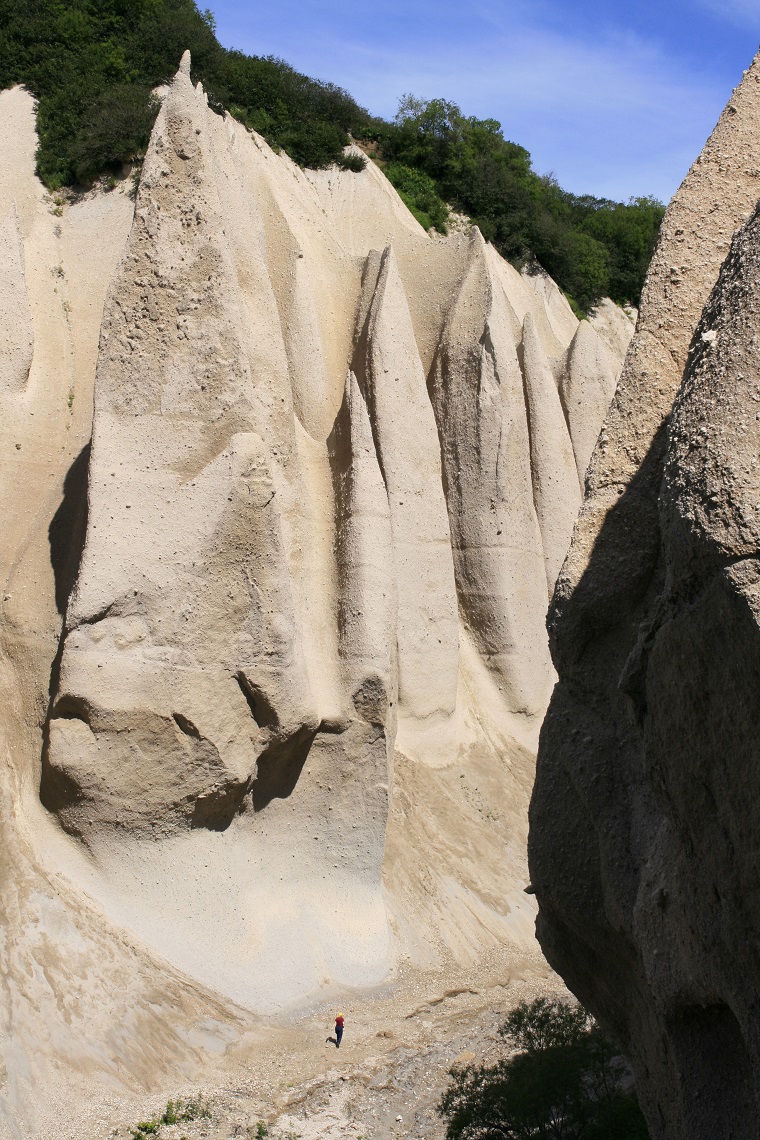
At least there was nothing boring about staying in camp. We were above the best of the alpine meadows, but there were flowers and even butterflies and grasshoppers. I didn’t realise at the time that this would be the only chance I’d get for a day of quiet reflection. Red Rivers took us to amazing places, and we came to appreciate Viktor’s experience as a guide, but it was all go, go, go!
I loved the mountain campsites, and in retrospect, I’m grateful I had this day to just sit and absorb the wonderful surroundings. I climbed a little way up above camp for the view of Vilyuchinsky and Mutnovsky. The clouds in the valley kept advancing up onto the plateau and it was so peaceful, I realised it would be easy to get caught out. When the campsite was enveloped in cloud, I retired to my tent to sleep for a while.
Later in the afternoon, I joined Sveta, the cook, in the mess tent where she was preparing dinner. Her nine-year-old son, Nikita, patiently taught me a few words of Russian and proudly demonstrated that he could count to 10 in English. He is learning English at school, but his mother had only a few words. I really wished I could talk to Sveta –— a doctor who works as a cook in her holidays because she enjoys the camping has to be an interesting person.
EXPLORING GORELY
Feeling a little better the next morning, I was determined to climb Gorely. We set off directly from camp and the vegetation thinned as we climbed, pretty, white Merck’s saxifrage growing higher than anything else but giving way to bare lava and ash. In the cloud, I was soon disorientated, trudging along behind Viktor up a featureless slope. When he stopped without warning we found ourselves on the edge of a crater with an almost sheer drop to a green lake below, glimpsed through the swirling mist. At 1,799m, Gorely is not the highest volcano but it’s certainly complex with no fewer than 11 summit craters.
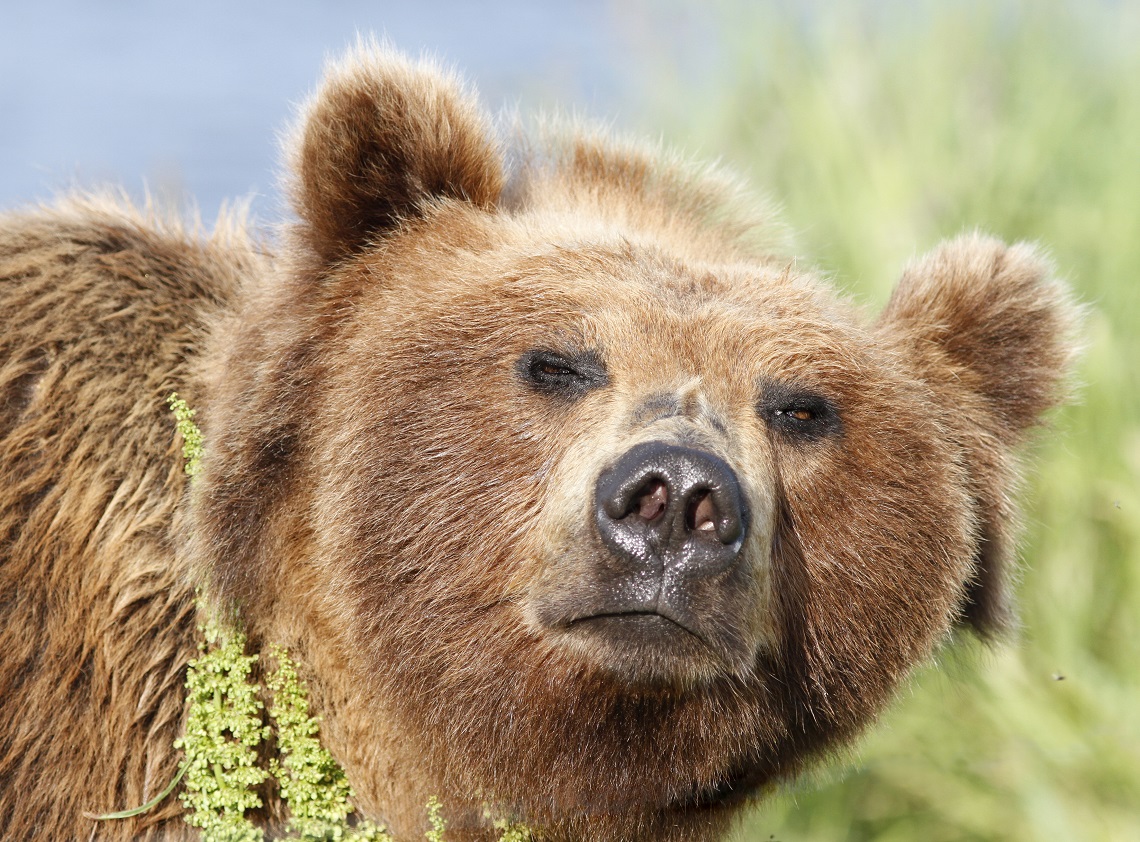
The active crater was still venting steam from fissures, a gentle reminder of what it can do. In 2010, immense pressure blasted a column of hot gas into the sky where it ignited like a fiery pillar. We stopped for a snack and a cup of sweet tea from the huge thermos flasks our guides always carried. The sun came out briefly, its warmth very welcome, but soon it was cloudy and cold again. By the time we were descending in a fine drizzle, I was feeling feverish. I collapsed in the bus, where Sveta kindly threw a sleeping bag over me while the others packed up camp.
Finally, everyone was onboard and ready to go… but something was wrong. The battery was flat. The other tourist buses had already left but our driver must have radioed for help because a jeep turned up to give us a jump start. Our Russian friends, not in the least concerned, regarded the delay as an excuse to get out the vodka bottle. Aleko was better at this aspect of socialising with the Russians than me! But I did learn their favourite toast za khoroshuyu pogodu (to the good weather). It seemed to work!
FURRY FRIENDS
About 120 miles from Petropavlovsk, near the southern tip of the peninsula, the 300m-deep Kuril Lake lies in an ancient caldera. Vast numbers of salmon, of six different species, migrate up the Ozernaya River to spawn in the lake and its tributaries. This bounty naturally attracts many predators, including bears in their hundreds. It is a two-day drive to get there, covering twice the direct distance, mostly off-road along the Sea of Okhotsk coast. The journey involves three river crossings; there are ferries across the Bolshaya and Opala rivers but the Koshegochek is shallow enough to ford most of the time.
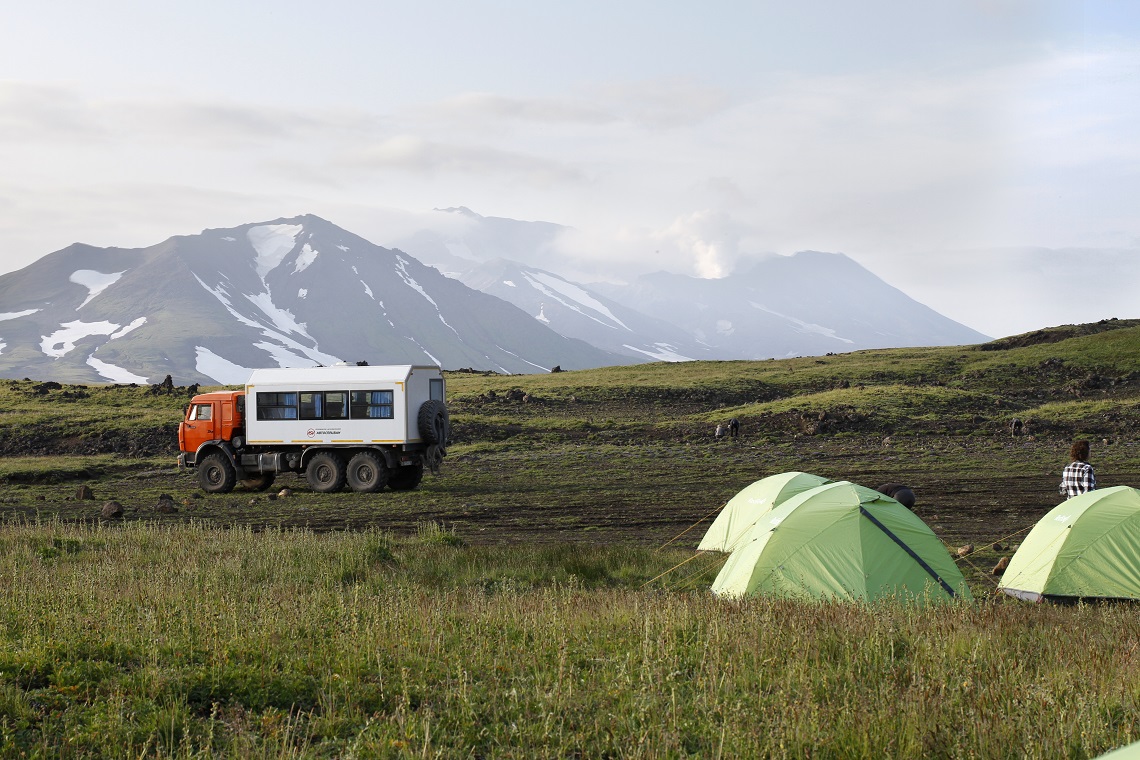
On the first night, we camped near the river so we could cross early in the morning before the waters are swelled with melting snow. The coast is one long black sand beach, with salmon nets stretching out to sea at regular intervals. The second night saw us camped beside the Ozernaya River opposite the South Kamchatka Sanctuary. In the morning, a boat arrived to transport our gear, while two of the rangers accompanied us on the 7-mile trek to the lake. A small detour took in the bizarre rock formations of weathered pumice known as Kutkhiny Baty.
The Itelmen are native to the Kamchatka Peninsula. They were a thriving hunting and fishing community up until the invasion of the Cossacks in the 18th Century, which decimated the Itelmen population. In the last 20 years, however, efforts have been made to re-establish the Itelmen settlements and revive its language, culture, and traditions.
According to the legend of the Itelmen* people, the pointed rocks are the canoes of the god Kutkha, left standing on end to dry.
At the lake, there is a permanent campsite next to the research station. It’s a beautiful location with a view across the water to Ilyinsky volcano, but it lacks something of the wilderness feel with several groups in the campsite and helicopters landing frequently. Tourism is expanding quickly here and many prefer the easy way in.
I knew we would spend more time driving than at the lake, but I was anxious to do some bear watching. It was frustrating having to spend hours hanging around camp as no one can go out without an armed ranger. Occasionally, though, a bear would come strolling along the shore just outside the electric fence, and it was thrilling to see them so close. Many bears congregate at the head of the river where the salmon-counting weir and wooden footbridge provide them with an excellent fishing platform.
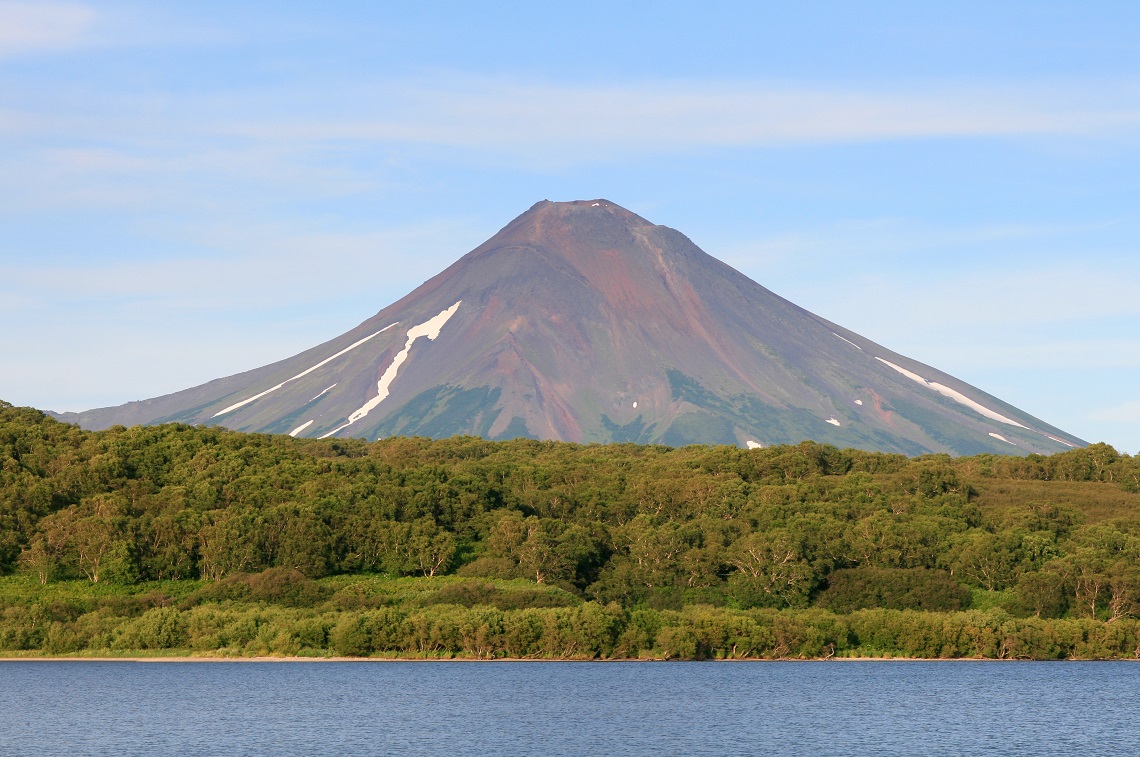
The bears themselves did not disappoint and I never expected such fantastically close views. They are there for the fish and seemed indifferent to our presence. It was a shame that neither our guides nor the rangers told us anything about bears and their place in the ecology, but I got chatting to a Slovenian researcher.
She told me it had been a poor year for salmon and many of the bears were skinny and underfed. The cute little cub I’d been watching was only now, in August, the size she should have been in June. Other females had two or three cubs, some well-grown as they stay with their mother for up to three years. Most unusually, one mother bear had an adopted cub as well as her own.
I was surprised how different they all were, even in just a few hours I was starting to recognise a number of individuals. There were gorgeous, golden bears, lanky youngsters and some big, ugly males with shaggy fur and numerous scars. These are among the largest of brown bears and males can weigh 700kg. Some were very dark, others honey-coloured, almost blonde.
Each seemed to have a preferred style of fishing; some wading through the river, head underwater looking for fish; others waiting to leap off the wooden bridge with a big splash. When the lunge or plunge was successful, the bear would usually just sit down in the river, devouring the prize with obvious relish and audible crunching. How I envied the young researcher her job observing bears all day!
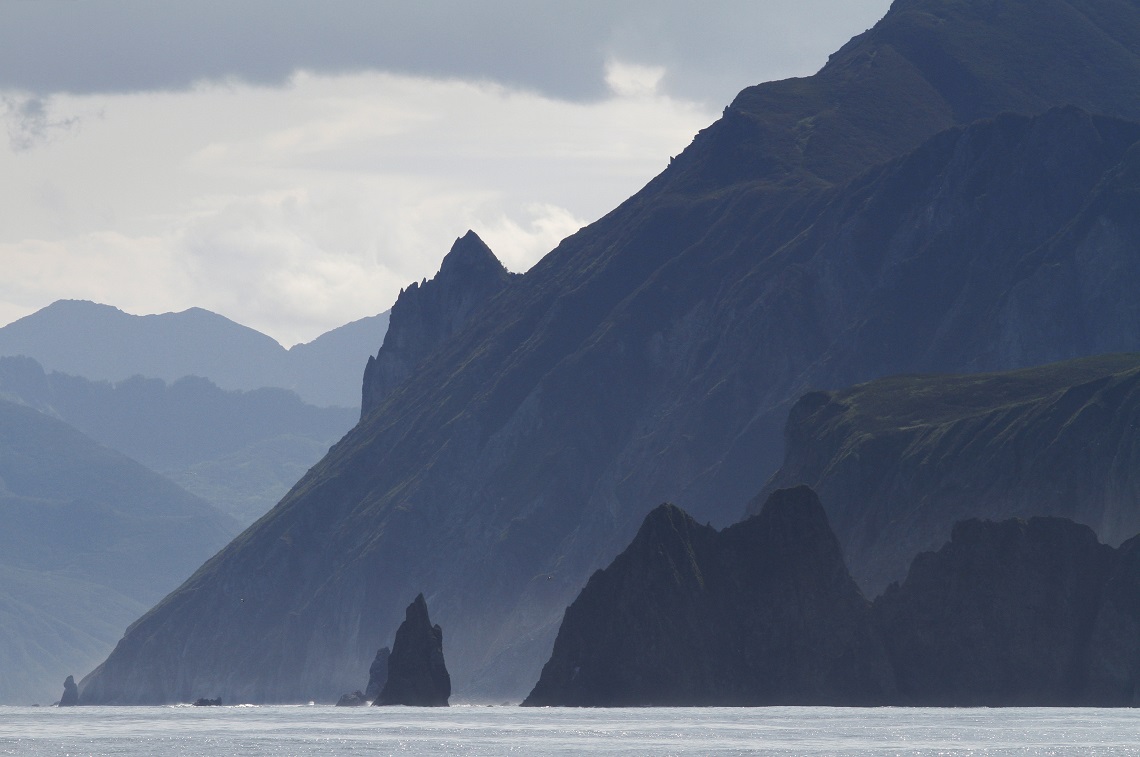
The bus journey back felt rather tedious, but a puncture turned out to be an unexpected bonus. While Andrei, the driver, laboured to remove the wheel and repair the puncture we enjoyed an unscheduled picnic on the beach. A spot of beachcombing was rewarded with glass fishing floats, a treasure I’ve hoped for since childhood. And, of course, there were bear tracks in the sand.
We had a few days in Petropavlovsk before our last tour. Kamchatka has a population of 400,000 people (less than Manchester) and around half live in the city. It has a splendid location on the shores of Avacha Bay, overlooked by two volcanoes, but is not a beautiful city. There is an imposing, golden-domed modern cathedral and some old wooden buildings in forgotten corners, but most areas are dominated by Soviet-era concrete apartment blocks.
Not far from the cathedral, Mishennaya Sopka, a small volcanic pimple, offers panoramic views over the city and Avacha Bay. The bay is a huge, sheltered inlet with a narrow entrance providing protection from tidal waves as well as storms. Danish cartographer and explorer Vitus Bering chose this safe haven to found a settlement in 1740, naming it Petropavlovsk after his ships St Peter and St Paul. In modern times it was ideal for a Soviet nuclear submarine base — the reason the region was closed to foreigners and even other Russians for so long.
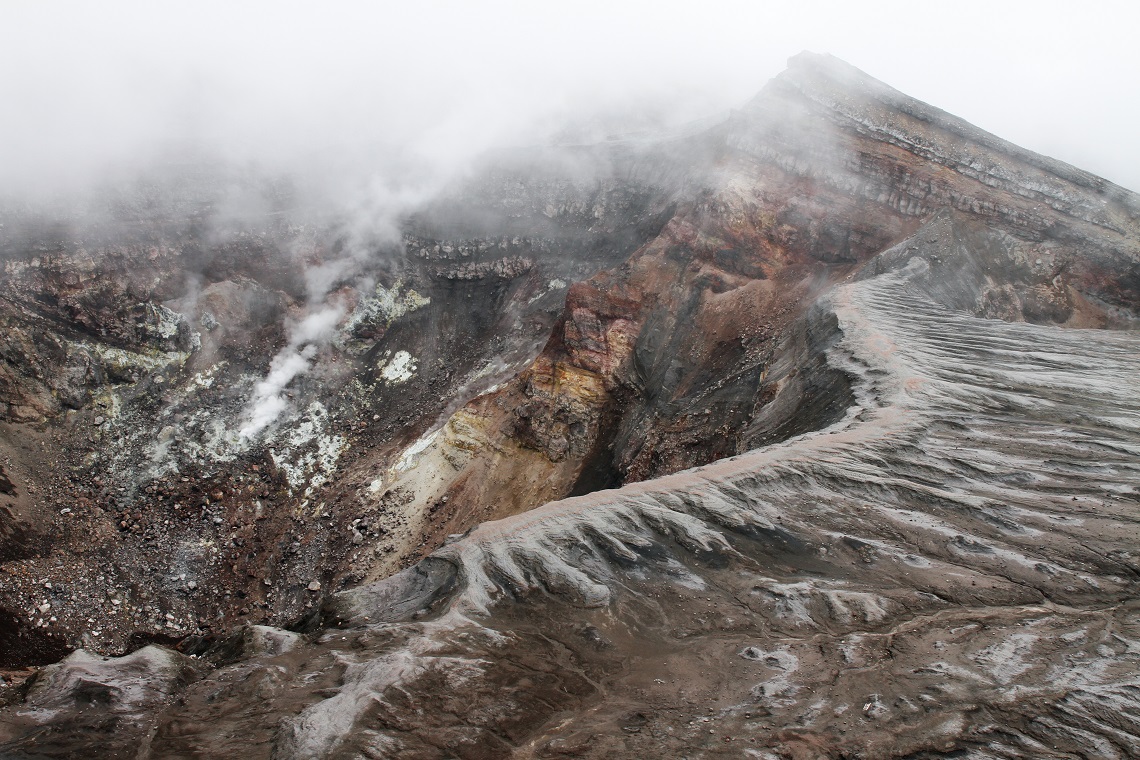
Our apartment was conveniently close to the market and we were amused to discover that we were shopping for food in one of the main attractions on guided city tours. The fish stalls took up much of the indoor market while the stallholders outside sold produce from their gardens along with mushrooms and berries. We ate like bears — salmon was cheaper than vegetables. I stopped eating the caviar when I realised how much is poached.
Salmon supports one in five jobs in Kamchatka, but an estimated 55,000 tons is also harvested illegally every year, a combination of over-catching by licensed companies and poaching. The poachers mostly take the salmon roe — valuable and easily hidden— discarding the rest of the fish. At the end of the trip, we returned to the market for our souvenirs, Aleko cramming his bag with several kilos of smoked salmon.
The volcano museum is worth a visit but there aren’t many tourist attractions. So, after a few days’ much-needed rest, we were eager to get going on our next adventure. We would miss Lena and Sasha; we’d enjoyed their company. Before we said goodbye, I asked them, of all the places they’d been in Kamchatka, which was the best. Without hesitation, they both replied ‘Tolbachik!’ — the very place we were heading to next… to be continued…
WHO’S WRITING?
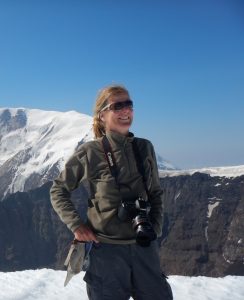 Genevieve Leaper is a freelance nature photographer, writer, and environmental consultant based in Scotland. She is a keen sailor and met her partner, Aleko, while sailing in Patagonia.
Genevieve Leaper is a freelance nature photographer, writer, and environmental consultant based in Scotland. She is a keen sailor and met her partner, Aleko, while sailing in Patagonia.
Since then, she has enjoyed exploring his home country, Greece, and hopes that Kamchatka is just the first of more adventurous trips together. She loves to photograph any wildlife, from dragonflies in her own pond and orchids in Greece to penguins in the Falklands but the Kamchatka bears were really special.



